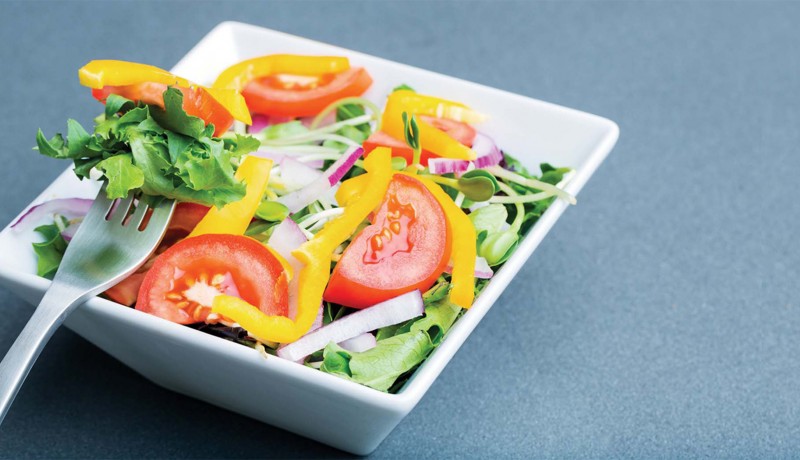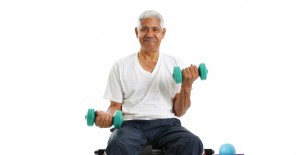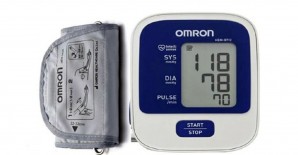
Health

Wellness consultant Naini Setalvad shows how to keep weight gain at bay
One of the key tools to maintain health—at any age—is to maintain optimum weight. If weight goes up, it has a domino effect. You suffer knee, joint and back pain, constipation, a rise in blood pressure, sugar and cholesterol levels, and a host of other problems. Amid all your weight loss efforts, hardly a day would go by without being haunted by write-ups on ‘the right diet to lose weight’ from magazines and newspapers looking squarely at you. It’s sad to watch people (young and silver alike) getting caught in the vicious circle of ‘dieting’ and still unable to keep the weight off. It’s interesting to know that the word ‘diet’ comes from the Greek word dietika, which means the course of life. And it is important to remember that each individual has their own dietary needs and requirements. There is no one-size-fits-all formula; every diet plan must be based on personal history; the course, indeed, of the individual’s life.
WAYS TO KEEP WEIGHT GAIN AT BAY
- Listen to your body: As you age, digestive functions also slow down. Your stomach is not able to digest the same amount of food as quickly and efficiently as when you were younger. It is easy to keep eating unhealthy and not realise the additional weight that gets accumulated as the years pass. It is, therefore, important to pay attention to what your body is telling you and eat accordingly.
- Make changes in your diet: Change is the only constant and if this change can be sustainable, it’s even better. Cut out simple carbohydrates like pizza, white bread, white rice, cakes, pastries, roomali roti, mithai, fried foods like samosas, spring rolls and puris, and processed foods from your diet and see the changes in your body.
- Watch your sugar levels: Your sugar level should always be kept in control—neither too high nor too low. High sugar can make you diabetic, increase inflammation, causing joint pains, and spur weight gain. On the other hand, low levels of sugar can cause hypoglycaemia. Thus, be careful to maintain your sugar intake.
- Have mini meals: Have small quantities of food throughout the day so you don’t remain hungry for long periods, causing you to binge when you finally eat. It’s important to eat four or five low glycaemic index smaller meals a day rather than two heavy meals. Not only does this keep hunger pangs at bay, it also picks up your metabolism. When you eat low glycaemic index foods, it keeps you fuller for a longer time—especially your carbohydrates in the form of grains.
- Eat more vegetables: When you sit down to eat, ensure that at least half of your plate is filled with vegetables. This comprises not only green vegetables but orange, red and yellow vegetables too. These have fat-fighting properties as well. While you eat fresh, whole foods to lose weight, it’s also important to pay a little attention to what you should stay away from.
- Have small amounts of protein and grain: Try and eat more complex carbohydrates like unprocessed whole grains, fruits, vegetables and lentils. Eating even small amounts of these proteins and grains can help as they are rich in nutrients. As for rice, shift to the unpolished brown basmati variety. Your daily diet should consist of three to four servings of brown rice (two medium cups) per meal, or wheat, nachni, jowar or bajra chapattis (about three per meal), one or two servings of lentils (dal or pulse) and low-fat yoghurt. In non-vegetarian meals, instead of dal you can have a fillet of fish or a chicken breast (with skin removed) and five to six servings of fresh vegetables, including salads (one serving is one bowl) and fruit.
- Eat fruits: The benefits are multifold. Fruits provide natural sugar that is easier for an elder person’s stomach to break down (being organic) and lend instant energy to the body. Eating at least one fruit a day also helps you get over your sweet cravings.
- Go for good quality fat: Eating the right fat can actually help you lose weight as fat satiates you. It also helps absorb vitamins and minerals, preventing ill health and low immunity. Plus, as you age the joints in your body start losing flexibility. To prevent this, have goodquality fats like ghee, nuts, seeds and coconuts.
- Get enough sleep: As we get older, our body takes longer to repair itself; the best time the body can do this is when we are asleep. Ensure you fulfil the minimum requirement of eight hours of good sleep daily so your mind and body are fresh to tackle the next day with vigour.
- Choose your beverages right: When you go out to eat or even if you are eating at home, be smart in choosing what drinks you select. Sweetened drinks, alcohol, liquor and fruit juices are the guilty party in retaining the fat cells in your body. Instead, choose lemon water, sparkling water, green tea, or non-sugared mocktails like Virgin Mary, etc.
- Move your body: At any age, it is necessary to keep moving our bodies by exercising. While it is true that major weight loss can be achieved by changing your food habits, exercise gives additional support to the endeavour. Simple exercise in the form of walking in the park for half an hour a day can help you reap tremendous benefits in the long run—it not only aids in weight loss but increases your stamina.
- Have nuts: Instead of fried food or savouries, have a handful of nuts occasionally for snacks in between meals. Crush the nuts for easier consumption.
- Drink a lot of water: Water is the most powerful drink as it is filled with nutrients that instantly refresh you. It is essential to keep yourself hydrated. Also, water keeps you full for a longer time, thus preventing you from overindulging in food.
- Check your vitamin and mineral levels: Having low vitamin and mineral levels is a very common occurrence among elders. If Vitamins B12, D3 or iron or sodium levels are below normal, fatigue sets in. So always keep a check on these parameters.
IN A NUTSHELL
Remember, it is possible to lose weight with sensible eating. Make sure you add vegetables, fruits, whole grains, pulses, dairy, fish and eggs to your diet. Avoid fried foods, sweets, processed and refined food, jams, pickles, butter, cheese, sugar, red meat, chocolates, egg yolk, ice-creams, cakes, cream biscuits, white flour, fruit juices, aerated drinks and sherbets, and alcohol and cigarettes.
It is also important to be more aware. There are common misconceptions about certain foods—there are foods we consider unhealthy that are actually good for you and can be added in your weight loss diet. These include potato, beetroot, coconut, cashewnuts, ghee, rice, sweet potato, and sugary fruits like pineapple, chikoo, mango, banana, and custard apple. Don’t be afraid to include these foods in moderation in your daily diet unless you have a medical problem that prevents you from eating them.
WEIGHT CONTROL RECIPE
KAND HANDVO
Kand (purple yam) is low in calories. The natural fibre in this root vegetable helps to slow down the rate at which your body processes sugar, keeping you from being hungry between meals.
Ingredients
- Kand: 250 gm; cut into pieces
- Ginger-chilli paste: 2 tsp
- Groundnuts: 1 tsp
- Sesame seeds: 1 tsp
- Cow’s ghee: 2 tsp
- Rock salt and lemon: to taste
Method
Boil the kand and mash it well. Keep the batter aside. Roast the groundnuts and grind them coarsely. Add rock salt, lemon and ginger-chilli paste. Mix well. Grease the baking tray with ghee. Place the kand batter evenly. Toss with sesame seeds and groundnut paste. Bake for half an hour till a brown crust forms on top. Serve hot.
Setalvad is an obesity and lifestyle disease consultant who offers diet counselling at Health for You, a wellness clinic in Mumbai, as well as online. Visit www.nainisetalvad.com for more details or write to contact.us@harmonyindia.org if you have any queries for her
Photos: 123RF.com Featured in Harmony — Celebrate Age Magazine April 2017
you may also like to read
-
Hot tea!
If you enjoy sipping on that steaming hot cup of tea, think twice. New research establishes a link between drinking….
-
Weight and watch
If you have stayed away from lifting weights at the gym, thinking it might not be a good idea for….
-
Toothy truth
Research has established a clear association between cognitive function and tooth loss when cognitive function score was categorised into quintiles…..
-
PRODUCT OF THE MONTH
Automatic Blood Pressure Monitor Measure your blood pressure and pulse rate with no fuss Hypertension, or high blood pressure, could….







